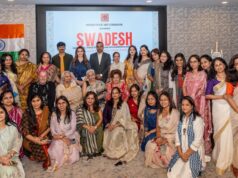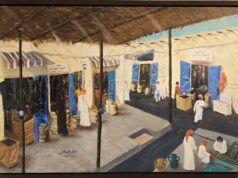One of the most well-known Hindu festivals is Holi, which is an old Hindu custom. It honours Radha Krishna’s enduring and heavenly love. Holi is a festival that marks the beginning of spring, the end of winter, and the blossoming of love. For many, it is a joyous day to socialise, have fun, forget, and forgive, as well as mend strained bonds. The festival, which honours Radha Krishna’s enduring and divine love, also serves as a reminder of Lord Vishnu’s victory over Hiranyakashyap as Narasimha Narayana and the triumph of good over evil.
Holi is a festival that marks the beginning of spring, the end of winter, and the blossoming of love. For many, it is a joyous day to socialise, have fun, forget, and forgive, as well as mend strained bonds. The festival also serves as an invocation for a prosperous spring harvest. It begins on the evening of the Purnima (Full Moon Day), which falls in the Hindu calendar month of Phalguna, which corresponds to the middle of March in the Gregorian calendar. It lasts for a night and a day. Holika Dahan or Chhoti Holi is the name given to the first evening, and Holi, Rangwali Holi, Dol Purnima, Dhulandi, Ukuli, Manjal Kuli, Yaosang, Shigmo, Phagwah, or Jajiri is the name given to the second day.
Rituals
Hindus have a long-standing, revered tradition known as Holi. It is a national holiday in India and Nepal and a regional holiday in other nations. It is a fun cultural celebration that gives Hindus and some non-Hindus alike an opportunity to make fun of others by tossing coloured water at them.
In parks, community centres, close to temples, and other open areas, people begin gathering wood and combustible materials for the bonfire days before the festival. An effigy of Holika, who lured Prahalad into the fire, is perched atop the cremation pyre. The pyre is lit to symbolize Holika Dahan on the eve of Holi, usually at or after sunset. The ritual represents the triumph of good over evil.
Children and teenagers form groups and colour their targets using dry paint, coloured solutions, water guns (pichkaris), coloured water balloons, and other inventive methods. Groups perform songs and dances while others play drums and dholak. People offer gujiya, mathri, malpuas, and other traditional treats after each stop for fun and colour play.
The celebrations could go on for more than a week in the Braj region of north India, which is located near Mathura. The rituals go beyond simply using colours, and one day involves men wearing shields and allowing women to playfully beat them with sticks as they pass by. The Barsana village traditionally celebrates it as Latthmaar Holi.
After a day of playing with colour, people tidy up, bathe, get sober, put on clothes, and greet friends and family by visiting them and exchanging treats in order to foster and develop social harmony. Various regions of Uttar Pradesh host Kavi Sammelans.
Holi originated in and is primarily celebrated in the Indian subcontinent, but thanks to the Indian diaspora, it has also spread to other parts of Asia and the Western world. The moral of the story is that those who try torment the pious will be destroyed and that good always triumphs over evil. Holi contributes to bringing the community together and preserving the secular foundation of our nation.










